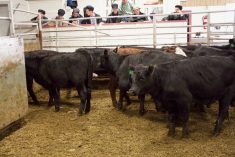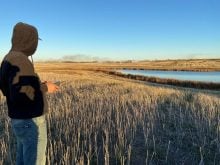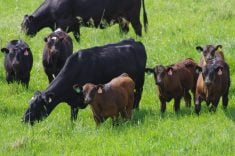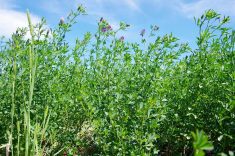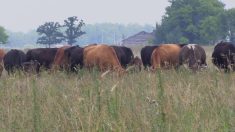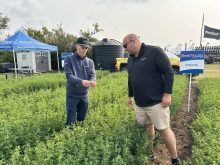When Arvid Nottveit thinks about Manitoba’s infamous 2011 flood, he says he still feels all the emotions that came with it.
“We all like to be all stoic and everything, be the captain on the ship facing the storm head-on, but I’m the guy that will say, ‘Okay, this is pretty bad. I need some help here.’”
That year, heavy snowmelt and spring rain in Manitoba and eastern Saskatchewan brought Lake Manitoba to a record level, made even higher by windstorms, and many living around the lake had to evacuate.
Read Also
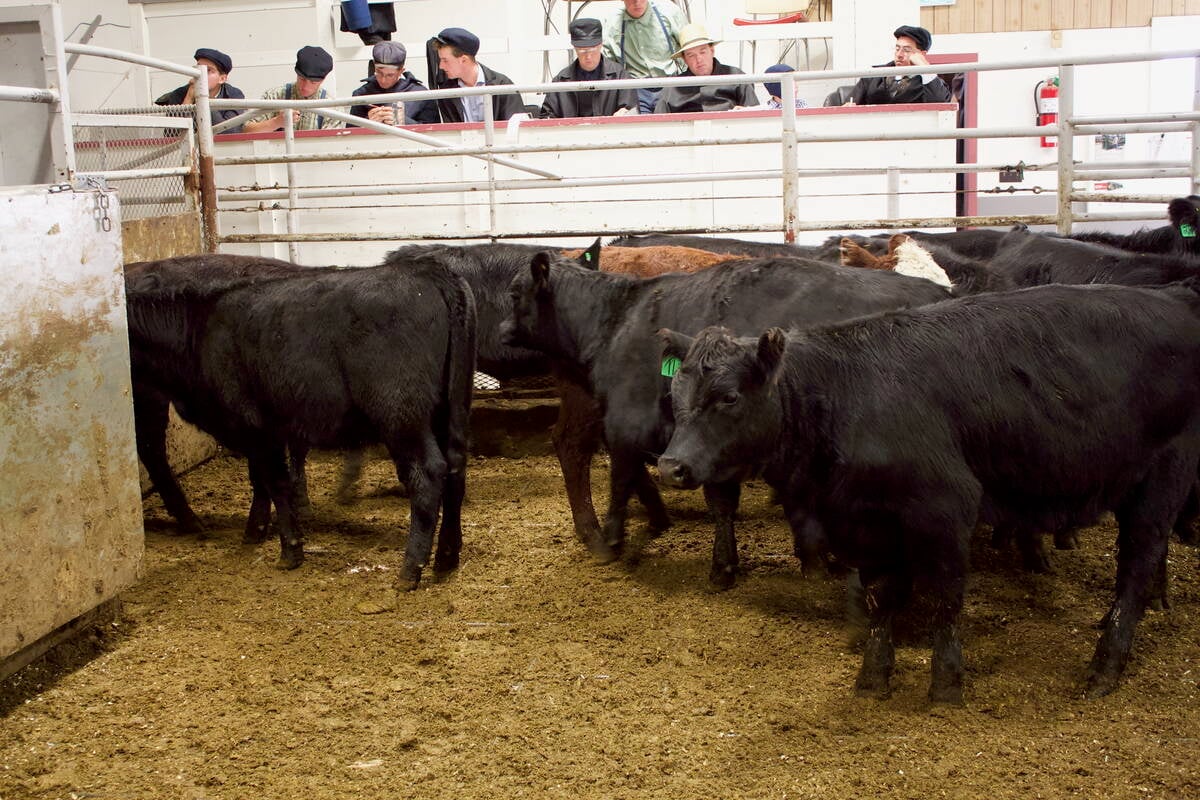
Manitoba beef weighs farmer futures
Cattle prices are good, but trade uncertainty and rising costs add some damper to Manitoba beef farmers’ celebration looking into 2026.
For producers like Nottveit, the flood’s effects didn’t recede with the water.
Lost opportunity
Nottveit owns and operates Tribar Ranching, on the Lake Manitoba peninsula, with 95 per cent of the operation on Crown land. They currently raise around 400 head of cow-calf pairs.
He remembers what it was like when he and his family had to leave during the 2011 flood, evacuating his cattle and wondering when he would be able to return.
It was two years before they were able to move their cattle back to their water-logged ranch. During that time, Nottveit took a large financial hit, renting pasture, downsizing his herd to almost half its original size and trying to pump the water off his land.
“In the summer of 2011, I made hay on 14 different landowner’s properties, and we rented half a dozen pastures,” Nottveit says.
He hoped to rebuild his farm from the ruins of the flood quickly, but as things were improving, he was hit by more floods in 2014 and 2017. While these weren’t as bad as in 2011, they still had significant effects on his operation.
“It’s kind of like opening up the wound, and it just takes longer to heal that way,” he says.
“I felt that I lost 10 years of opportunity because I was working towards reclaiming the land and there’s all kinds of costs there, and frustrations that continued for 10 years.”
Now, nearly 14 years after the initial flood, Nottveit still feels the effects.
Before 2011, he ran around 700 head. It’s now around 400, and he says he wouldn’t want 700 again because he doesn’t think the land has recovered enough.
“I still think the grass is different. What is the effect of having lake water on soil for a year? It killed any bacteria or any organic growth in the soil.”

Now, some of his land seems to permanently have cattails, and the soil has lost productivity.
“My son was out in Alberta, working on farms and going to school, and he’d come back and put the garden in here and he tilled up the garden, and he said, ‘This soil smells like it’s just rotting’,” Nottveit says. “There’s no worms, there’s no bugs, there’s nothing. We couldn’t even grow a decent garden for years.”
Last summer they cut a hay meadow for the first time since before the flood, but the quality was poor and doesn’t show any signs of improving.
With the herd downsized and not much opportunity to expand to its original size, Nottveit sees prices now and can’t help but wonder about how things could have been.
“If I had 600 head this year, I don’t even like to think about it, but at $2,200 a calf, and I’m going to sell 400 calves? That really hurts, especially when you’re bringing on the next generation.”
Salinity and lost windbreaks
Tom Teichroeb ranches near Portage la Prairie, Man. Like Nottveit, he was greatly affected by the 2011 and 2014 floods. He had to evacuate cattle and rent pasture, meaning he had to commute to his herd every day. He was also unable to make hay in 2011, 2012 and 2014.
“At that time of year, it’s very difficult to source feed, and especially in our area at the time, because everybody was impacted by the flood that was a cattle person. And so sourcing feed was really, really difficult,” he says.
The 2011 flood also happened while Teichroeb was calving, which made evacuating his cattle challenging.
Despite the hardship, Teichroeb recognizes his luck compared to so many others who were affected by the flood. Though he had to move cattle to rented pasture, his family didn’t have to leave their home. He was able to expand his herd after the initial years of devastation.
Still, that doesn’t mean he has been left unaffected by the floods.
“The salinity issues that we had and the alkylations that we had there were tremendous. So many of those areas, too, we couldn’t access for a long time,” Teichroeb says.
“We do rely on those natural windbreaks and stuff. So, yeah, certainly a tougher aspect to manage there.”
Government assistance
Through AgriRecovery, the federal government “works with provincial governments or territorial governments to assess the effects of disasters on agricultural producers and respond with joint initiatives where there is need for assistance beyond what is available through existing programs.”
But Nottveit says the assistance he received hasn’t covered his losses.
“A disaster in Canada, according to the government, lasts one year. And so back in the flood of 2011 there were five parts to the program… and I qualified for every one. I got compensated in every one of those parts. And I appealed every one of the settlements I got.”
Nottveit says he appreciated any assistance from the government following the flood, but feels government officials didn’t realize how long the effects last.
Teichroeb says there was flood assistance in 2011, but because he couldn’t make feed in 2012 or 2014, and the flood assistance was only for 2011, he also had to take advantage of crop insurance.
“As you claim from one year to the other year, your deductibles change and your ability to capture the full value of what you’ve lost probably was never really realized.”

Following the 2011 flood, the federal and Manitoba governments began negotiations on construction of a channel to prevent flooding by diverting water from Lake Manitoba to Lake Winnipeg. But the project was shelved in 2024, in part due to opposition from Indigenous communities who suggest a more sustainable alternative.
Nottveit says the possibility of Lake Manitoba flooding is still a concern.
“The lake level is huge for us. I can tell you what it is just by looking at it.”
But he’s optimistic, and is slowly stepping back from the work on the ranch as his sons start to take over. Though his children have experienced all the hard times with the floods, they still maintain their passion for agriculture.
Though there is a bright future for his ranch, Nottveit still reflects on the hardships of the flood. But he didn’t get through it alone — he had his wife, his family, his faith and the rest of the beef industry to help him.
“I mean, it’s called ‘Friendly Manitoba’ on the licence plate. And that was certainly my experience.”
Teichroeb also remembers the hardship of the flood years, but like Nottveit, also the way his community and neighbours rallied around him despite the devastation they all were experiencing.
“We had a tremendous response from folks in our general area.”




